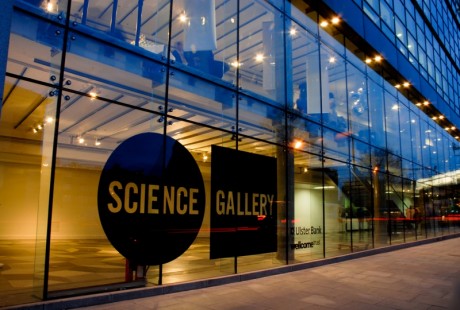
The Science Gallery has always been a source of wonderful and provocative musings, not only on art and science, but on what it means to be human. The art on show always makes one pose interesting questions and imagine realities both distant science-fiction and imminently possible. Life At The Edges is another great opportunity to look into the heart of life by looking out at it.
Genesis, by Xandra van der Eijk, is “an ongoing research project into properties of extremophiles”. Taking samples of bacteria that thrive under extreme conditions, van der Eijk creates colourful panels from living material, evoking an invigorating intersectionality between genres of abstract art such as colour field painting and radical efforts of the likes of SymbioticA, which is making laboratory art from living organisms. Such work makes a compelling case for a new symbolism or semantics of colour – one that is not directed by the emotional or conceptual forces that drove the likes of Titian, Matisse or Rothko, but that which constitutes life itself. Can we have an art that might skip the moment of interpretation and instead look once more directly at organic matter as a source of wonder? Objective and categorical, yet no less beautiful for it. It comes as no surprise that the Science Gallery would herald such an aesthetic approach.
Drosophila Titanus considers the potential of new life in opposition with death. Breeding generations of fruit flies under various conditions so as to produce, under artificial evolutions, a species capable of living on Jupiter’s moon Titan, the project by Andy Gracie is another insightful look as to how we can craft life. But on the other hand, it led me to brood over another issue. With humanity (at least in the first world) now in a position totally opposite to these fruit flies – where almost every person is able to survive and reproduce regardless of any defect or flaw that may have previously encumbered them – is the human species no longer progressing in evolutionary terms? Have we reached a point where medicine and social customs have replaced the need for individual strengths and is humanity worse off for it? The thought is a controversial one, but I am only more impressed by the Science Gallery for being able to evoke it in a setting that is so open and inclusive of everyone, and encouraging further inquiry in an open-minded manner.
It has long been common to find artworks of an ethical nature at the Science Gallery, and this time is no different. One of the first pieces on display is a comic book by Eva Rust called Chimponauts & Astrocats, which highlights the dark reality behind science fiction. Her illustrated history of the animals sent into space in the name of science and human progress is both a touching and entertaining account of what are mostly sad, but at times absurd, stories.
What is most striking is not the subjectivity of these artworks, but the idea that science too, which is generally thought of as a bastion of objectivity, is itself subject to the wishy-washy world of ethics and aesthetics, to the expansions and multiplications of the human imagination. Einstein once said: “Imagination is more important than knowledge. For knowledge is limited, whereas imagination embraces the entire world, stimulating progress, giving birth to evolution.” And so perhaps it is in fact best to disregard this article – and instead go down to the Science Gallery to see what it all might mean to you.






